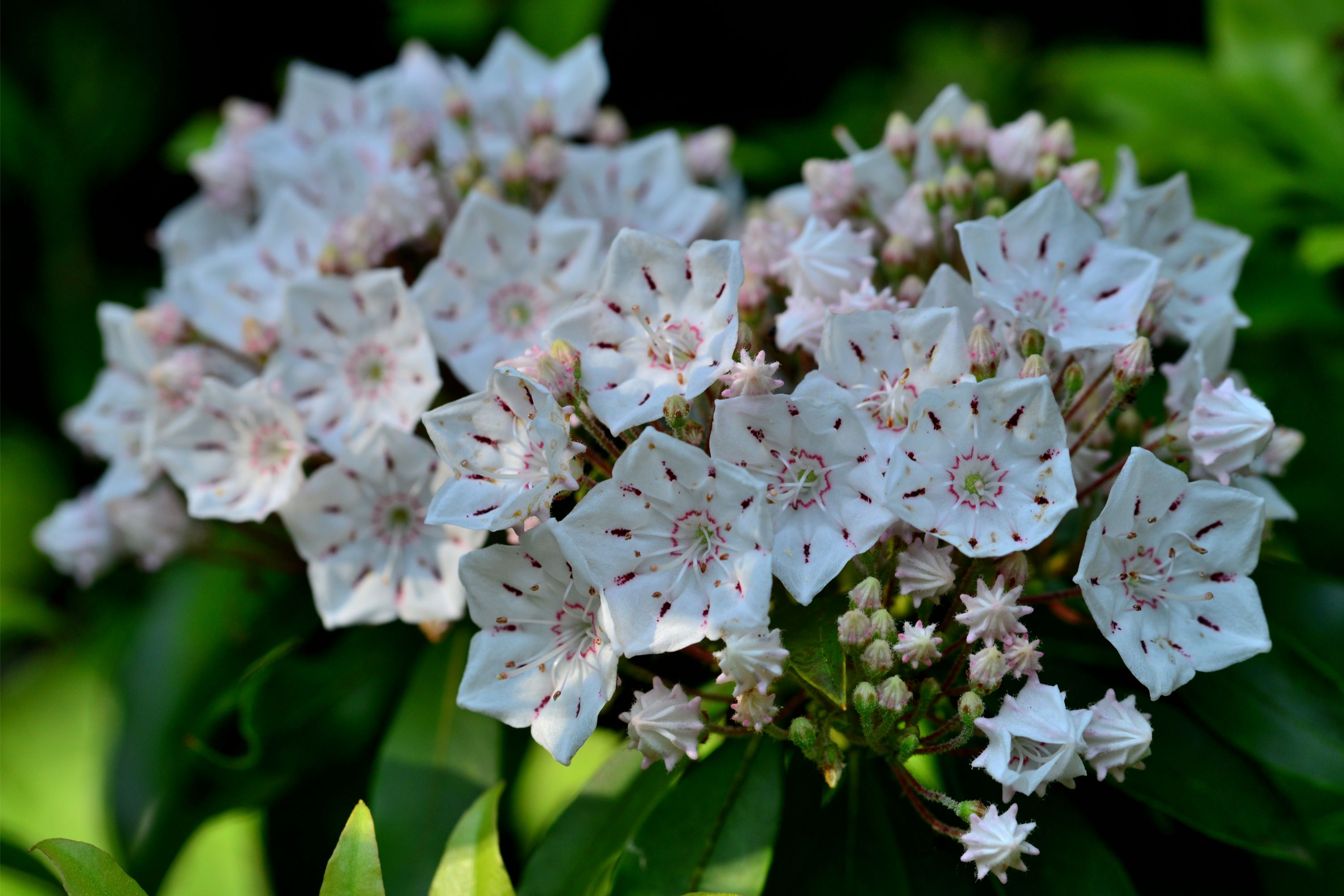Mountain Laurel
(Kalmia latifolia)

Description
Kalmia latifolia, commonly known as mountain laurel, is a species of flowering plant in the heather family, Ericaceae. It is native to the eastern United States, ranging from southern Maine to northern Florida, and westward to eastern Texas. Kalmia latifolia is an evergreen shrub that typically grows up to 15 feet tall, although some specimens have been recorded up to 30 feet tall. Taxonomy and naming The genus Kalmia was named in honor of Peter Kalm, a Swedish botanist who visited North America in the mid-18th century. The specific epithet latifolia means "broad-leaved" in Latin, referring to the plant's broad, dark green leaves. Mountain laurel is also known by several other common names, including spoonwood, calico bush, and ivybush. Description Kalmia latifolia has a dense, bushy growth habit, with multiple stems branching from the base of the plant. The leaves are evergreen, glossy, and leathery, with a dark green color on the upper surface and a lighter green on the underside. The leaves are arranged in an alternating pattern along the stem and are oval in shape, measuring 2 to 5 inches in length and 1 to 2 inches in width. The flowers of Kalmia latifolia are one of its most distinctive features. They are arranged in large, showy clusters at the tips of the branches, with each cluster containing dozens of individual flowers. The flowers are urn-shaped, with five petals that are fused together at the base to form a shallow cup. The petals are usually pink or white, with darker markings in the throat of the flower. The flowers bloom in late spring to early summer and are a favorite of bees and other pollinators. The fruit of Kalmia latifolia is a dry, woody capsule that contains numerous small seeds. The capsules mature in the fall and remain on the plant throughout the winter. Distribution and habitat Kalmia latifolia is native to the eastern United States, where it is found in a variety of habitats, including open woodlands, rocky hillsides, and mountain slopes. It is most common in the Appalachian Mountains, where it is often found growing in association with other ericaceous plants such as rhododendrons and azaleas. Cultivation Kalmia latifolia is a popular ornamental plant, valued for its attractive foliage and showy flowers. It is often used in landscaping as a specimen plant or as a screen or hedge. The plant is best suited to acidic, well-drained soils and prefers partial shade to full sun. It is tolerant of a wide range of soil types, but does not do well in areas with heavy clay soils or poor drainage. Propagation of Kalmia latifolia can be done by seed or vegetative methods. Seed propagation requires stratification, in which the seeds are chilled for a period of time before planting. Vegetative propagation can be done by taking stem cuttings or by layering, in which a low-growing branch is bent down to the ground and covered with soil to encourage rooting. Potential toxicity While Kalmia latifolia is a beautiful and valuable plant, it is important to note that all parts of the plant are toxic if ingested. The leaves contain a number of toxic compounds, including andromedotoxin and arbutin, which can cause nausea, vomiting, and diarrhea if consumed. Ingestion of large amounts of the plant can be fatal, and caution should be exercised when planting it in areas where children or pets may be present.
Taxonomic tree:







